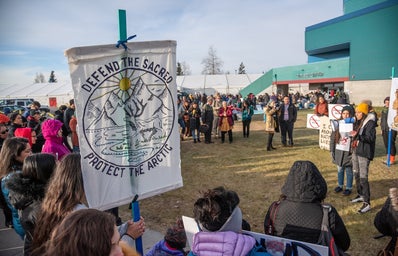Oct. 9 is Indigenous Peoples’ Day. This may seem like a newer holiday, and that’s partly true, but in a way, it’s always been here. Here’s a breakdown of why the holiday is important, as well as how to support and amplify Native American communities today and always.
Why Indigenous Peoples’ Day Is Important
People have “celebrated” Columbus Day for decades, but many have been against this for a long time. More importantly, Native Peoples have advocated for the change to Indigenous Peoples’ Day from Columbus Day since a United Nations conference in 1977. And in 1989, South Dakota was the first state to replace Columbus Day with Indigenous Peoples’ Day. Outside of Native American populations, nowadays, many Americans recognize that Columbus Day doesn’t represent actually anything (aside from some guy that wasn’t actually the first person to “discover” North America). So much of American history has been whitewashed, and just favoring colonizer accomplishments with a day of recognition is one way of doing that. In favor of eliminating this Columbus Day, President Joe Biden formally recognized Indigenous Peoples’ Day in replacement of Columbus Day in 2021.
On this day, the American public is encouraged to recognize Native American folks’ accomplishments, culture, losses from colonization, and the ongoing issues that face their communities. Native Americans may never have their land back, but this day holds so much significance. So much Native American history has been erased and ignored, and this day serves as a powerful reminder that they’re still here, and they aren’t going anywhere. According to the National Museum of the American Indian, the day serves as a memorial for the “cultural persistence, creative adaptation, renewal, and resilience” of Native Americans.
How To Support Native American Communities, Today and Every Day
Today and every day, AIAN accomplishments deserve to be celebrated. Take this day to support AIAN artists, creators, authors, charities, and businesses. If you’re looking to read new books and learn more about AIAN folks’ culture and history, I suggest looking into works by Native American author Leslie Marmon Silko. In her 1977 novel Ceremony, she writes about the experience of a Pueblo soldier returning to his culture after his experience at war. If you’re looking to read a book geared more towards activism, I recommend Vine Deloria Jr.’s Custer Died for Your Sins: An Indian Manifesto. Deloria Jr. spent his life advocating for the rights of Native American peoples, and this novel uses a humorous tone to discuss heavy issues like “race relations, federal bureaucracies, Christian churches, and social scientists.”
Want to listen to some music? Spotify offers a playlist titled “Indigenous,” which highlights Indigenous Canadian artists, and another called “Native American Musicians You Should Know” with Native American artists.
In terms of donating to support AIAN communities, check out Native Movement, an organization that aims to advance and support Indigenous groups across Alaska, as well as support environmental justice and fight climate change. If you’re a student, or you’re a former student, you may want to consider supporting young Native American folks seeking a higher education. If so, check out the American Indian College Fund, an organization that offers scholarships and academic enrichment opportunities for American Indian students.
It’s important to remember, once again, that so much Native American culture has been erased or ignored. Over the past few years, I’ve learned about “Two-Spirit” people, who are individuals that were assigned a given sex at birth, but identify with the opposite gender (i.e. born female, but identify as men). The Navajo in particular highly revere these individuals, as they’re believed to have a deep connection to this world and the afterlife. Specifically, the Navajo recognize these individuals as sacred, and they are highly respected in the communities they live in. If you’d like to learn about Two-Spirit people from an actual Two-Spirit person, you might want to check out Kairyn Potts on TikTok!
There are lots of other AIAN TikTok creators to follow today on Indigenous Peoples’ Day and everyday. Tawny Cale is one creator on the app who makes beaded accessories and advocates for Native American rights through her videos and artwork. Another Native American creator, Cheyenne Faulkner, also creates beadwork (I have to say, her pieces are some of the most colorful and intricate I have seen on the app!).
Besides those with small businesses, it can also be great to support AIAN content creators as well. TikTok offers so many creators that educate about Native American culture, and you may already be familiar with two of them! James Jones is quite popular across many forms of social media for his traditional hoop dancing, and videos expressing injustices against Native American people. Similar widespread popularity can be said for Shina Nova. Shina is one of my favorite creators to follow, in part for her education of her culture’s “throat singing,” but also for her openness about her Inuit background. She gained a lot of social media attention when she shared videos of her and her mom practicing throat singing, as well as videos in which she eats raw meat of specific animals — a diet common in her culture. We can learn and appreciate so much from AIAN creators, especially on a day honoring them. Make sure to give them a follow!


